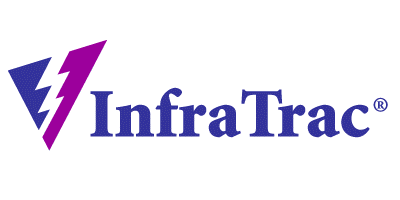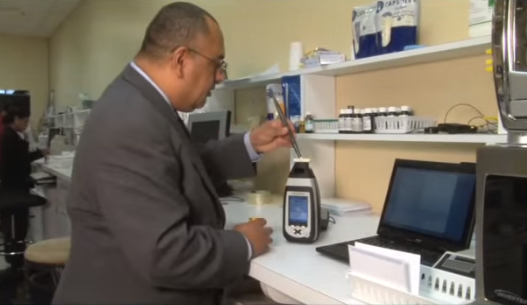Eliminating Fakes and Mistakes with IP Protection: InfraTrac Named as a Winner in the America Makes 2016 AM Challenge for Small Businesses
 Many exciting challenges come and go in the 3D design and 3D printing industry, inspiring both individual makers and startup teams to come forth with incredible new innovations that can offer great value worldwide. The winners usually show great potential and it’s generally just a matter of time before we see them in the limelight again. In this capacity, we’ve become very familiar with America Makes, following recent awardees for project calls and their latest, a $100K 3D printing contest with AMPED.
Many exciting challenges come and go in the 3D design and 3D printing industry, inspiring both individual makers and startup teams to come forth with incredible new innovations that can offer great value worldwide. The winners usually show great potential and it’s generally just a matter of time before we see them in the limelight again. In this capacity, we’ve become very familiar with America Makes, following recent awardees for project calls and their latest, a $100K 3D printing contest with AMPED.
Currently though, America Makes has been busy announcing the winners of another challenge: America Makes 2016 Additive Manufacturing Challenge for Small Businesses. The competition is sponsored by Penn State University’s Center for Innovative Materials Processing in an effort to take that 3D printing revolution a step further as they both identify and promote new ideas for the industry. Proposals were submitted by the end of late March, and now InfraTrac has been named as one of five final award winners. While we hear of so many amazing new designs and products, it’s easy to see why InfraTrac’s technology was chosen. Both necessary and extremely relevant, their concept may very likely be one that we see in the future being used by many.
 Focusing on the copyrighting and intellectual property discussions and issues that have both arisen and plagued the 3D industry lately, InfraTrac created a solution. They’ve coupled 3D printing with unique chemical fingerprints that will allow for much greater security, as well as discerning whether a product is authentic or not. This is a company we’ve followed previously, interviewing founder and CEO Sharon Flank, PhD, earlier this year.
Focusing on the copyrighting and intellectual property discussions and issues that have both arisen and plagued the 3D industry lately, InfraTrac created a solution. They’ve coupled 3D printing with unique chemical fingerprints that will allow for much greater security, as well as discerning whether a product is authentic or not. This is a company we’ve followed previously, interviewing founder and CEO Sharon Flank, PhD, earlier this year.
“We’re honored that InfraTrac was selected for the Additive Manufacturing Challenge,” said Dr. Flank. “This competitive award acknowledges the importance of protecting the makers and users of 3D printed products from potentially dangerous fakes. Our light-based anti-counterfeiting technology is an effective approach for tagging and authenticating polymer-based products. The Challenge R&D stipend will help us scale up and extend our technology into the industrial arena, including metal 3DP.”

InfraTrac’s technology has potential for a wide range of applications, where authenticity can be tested and then verified via computer software.
The technology actually allows for a unique fingerprint to be embedded within one of the layers during 3D printing. According to InfraTrac, this presents a tamper-proof intellectual property protection system, acting as a signature and offering authentication. As the 3D printed product moves down the supply chain, anyone testing for authenticity can do so with a handheld spectrometer.
“InfraTrac’s team has applied elements of their technology in novel ways to create protection for additive manufacturing, where the ability to scan-and-copy anything threatens to create an intellectual property nightmare and massive risk for aerospace and defense, key Maryland industries, as well as automotive, medical devices, and more,” according to Mike Kelleher, COO/CFO of Maryland MEP, a nonprofit organization focused on strengthening manufacturers and their processes throughout Maryland.
And in line with the benefits of 3D printing that draw so many to the technology in the first place, these IP protection products are affordable as well as easy to make. According to InfraTrac in their latest press release, however, these chemical signatures are ‘very difficult to spoof’ and offer a patented technology that is proven to show whether a part or object is authentic or a fake.

InfraTrac technology offers great potential in the field of pharmaceuticals for eliminating counterfeiting, as well as verifying dosages.
R&D stipends were awarded to each of the winners in the contest to assist them in forging ahead with their innovations, including access to the university facilities and research personnel of Penn State, as well as the facilities of collaborators for the competition to include America Makes and the Manufacturing Extension Partnership (MEP) of the National Institute of Standards and Technology (NIST). If you’re interested in finding out more about InfraTrac and how the company came to be, check out the informative video below which gives a great explanation about how their technology works in specific applications. Lets talk about this latest announcement over in the InfraTrac Wins in 3D Printing Challenge at 3DPB.com.
Subscribe to Our Email Newsletter
Stay up-to-date on all the latest news from the 3D printing industry and receive information and offers from third party vendors.
You May Also Like
Gorilla Sports GE’s First 3D Printed Titanium Cast
How do you help a gorilla with a broken arm? Sounds like the start of a bad joke a zookeeper might tell, but it’s an actual dilemma recently faced by...
Nylon 3D Printed Parts Made More Functional with Coatings & Colors
Parts 3D printed from polyamide (PA, Nylon) 12 using powder bed fusion (PBF) are a mainstay in the additive manufacturing (AM) industry. While post-finishing processes have improved the porosity of...
$25M to Back Sintavia’s Largest Expansion of Metal 3D Printing Capacity Since 2019
Sintavia, the digital manufacturing company specializing in mission-critical parts for strategic sectors, announced a $25 million investment to increase its production capacity, the largest expansion to its operations since 2019....
Velo3D Initiates Public Offering in a Bid to Strengthen Financial Foundations and Drive Future Growth
Velo3D (NYSE: VLD) has been among a number of publicly traded 3D printing firms that have attempted to weather the current macroeconomic climate. After posting a challenging financial report for 2023,...































